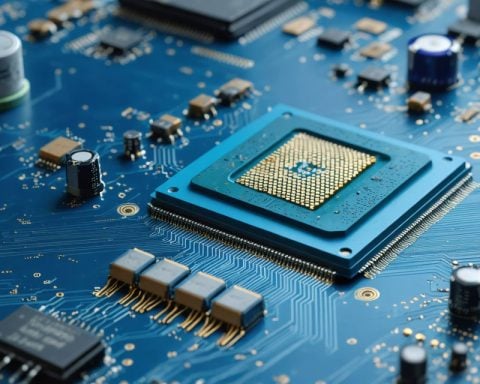As the gaming industry races toward unprecedented advancements, AMD stands at the forefront with a game-changing innovation that’s turning heads. Known for powering high-performance gaming consoles and versatile PC setups, AMD’s recent foray into machine learning-powered graphics could redefine gaming visuals as we know them.
While traditional graphics rely on sheer brute force from hardware to render lifelike visuals, AMD’s new approach involves leveraging AI-enhanced algorithms to predict and preprocess graphical output. This technique not only promises smoother gameplay but also requires significantly less computational power.
The secret lies in AMD’s FidelityFX Super Resolution (FSR) technology, a cutting-edge solution that offers gamers higher frame rates without sacrificing visual fidelity. This is a crucial development as games become more visually demanding, pushing the limits of current hardware. The FSR technology also supports a wide range of hardware configurations, ensuring both current-gen and older systems can benefit from these advancements.
Looking to the future, AMD’s integration of machine learning is set to change how developers approach game design. With the potential to focus more on innovative gameplay and precise game mechanics rather than hardware limitations, developers can let their creativity run wild. Furthermore, gamers stand to gain from longer lifespan for their existing setups, making gaming a more inclusive hobby.
In a world where every frame matters, AMD is not just keeping up with the gaming industry’s demands—it’s setting the bar higher, ensuring a visually stunning future for players across the globe.
Revolutionizing Pixels: How AMD’s Graphics Leap Affects Real Life
As AMD advances its machine learning-powered graphics, the implications stretch beyond immersive gaming to potentially impact several facets of daily life, technology, and economy. One might ask: how does a graphics technology influence broader societal aspects?
Education and Training: High-quality graphics can transform virtual education and training by simulating real-world conditions more efficiently. Enhanced visual fidelity means more realistic and detailed models, beneficial for fields like medicine and engineering where precision matters.
Economic Implications: The democratization of powerful graphics across various hardware, thanks to AMD’s FidelityFX Super Resolution (FSR), may also level the market playing field. With even lower-tier systems accommodating advanced gaming and applications, budget-conscious consumers gain access to high-end technology without a hefty investment. This could lead to increased market competition and innovation, pushing other companies to adapt.
Ecosystem and Environment: Yet, the debate around energy consumption persists. Machine learning requires computational power, and while AMD’s innovation optimizes it, there’s an ongoing need for balance. Reduced power consumption from FSR can contribute to greener tech solutions, but the growing demand for processing power overall continues to stress energy grids.
What about potential downsides? Could such advancements further widen the digital divide between those adept with technology and those without access? While AMD facilitates broader access, the underlying challenge of tech literacy remains.
Community Development: As gaming communities benefit from such advancements, there could be a ripple effect. Developers may pivot, encouraging new forms of storytelling and interaction. Yet, these shifts might also marginalize smaller developers unable to keep pace.
In conclusion, AMD’s strides in graphics technology have far-reaching implications. From educational advancements to economic shifts and environmental considerations, these developments intertwine with broader societal themes. For more insights into AMD’s innovations, visit AMD.



















